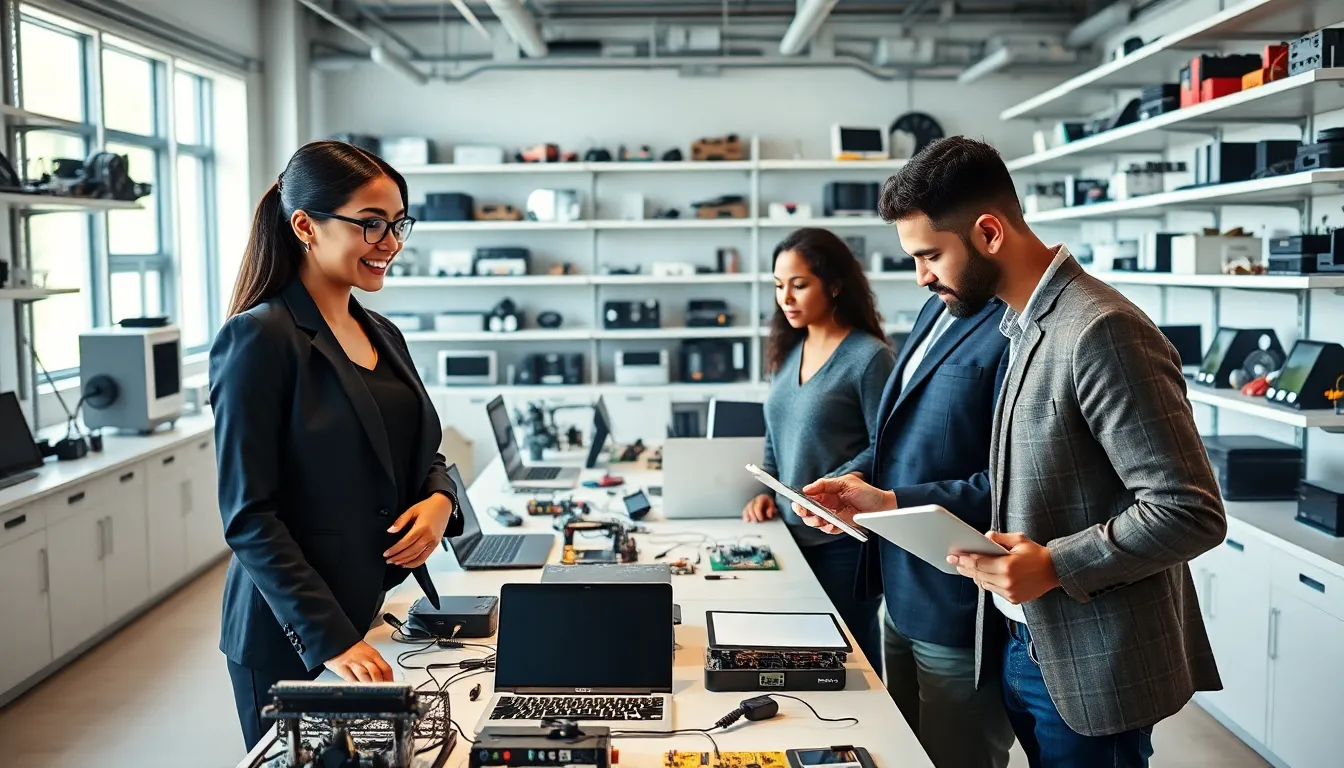Table of Contents
ToggleImagine walking into a space where the latest tech gadgets buzz with potential, welcome to a gadget lab. Here, innovation isn’t just a buzzword: it’s a way of life. Whether you’re dreaming up the next smartphone or perfecting the ultimate smart home device, a gadget lab is your playground. Prepare for a dee jump into the intriguing realm of gadget labs, where creativity meets cutting-edge technology. You might just find yourself inspired to start your own.
What Is a Gadget Lab?

A gadget lab is often viewed as a sanctuary for inventors and tech enthusiasts alike. It’s a place where creativity reigns supreme, and ideas transform into tangible products. In these labs, individuals, whether they are students, engineers, or hobbyists, can experiment with various electronic components, software, and creative designs. Picture an artist’s studio, but instead of paintbrushes and canvases, there are circuit boards, wires, and an array of tools ready to bring ideas to life.
These labs serve a variety of purposes, from prototyping new devices to conducting research. The atmosphere buzzes with innovation, where collaboration and exploration are encouraged. Essential tools commonly found in gadget labs range from 3D printers to soldering kits, offering everything needed to experiment and bring those wild ideas to fruition.
The Importance of Gadget Labs in Technology Development
Gadget labs play a pivotal role in the technology ecosystem. For starters, they provide an environment that fosters creativity. Without a space dedicated to exploration and experimentation, innovations would likely stagnate. In these labs, ideas can be tested and iterated upon swiftly, making them vital for rapid development.
Also, gadget labs often act as incubators for startup ideas. Many of today’s well-known tech companies began in humble settings, surrounded by like-minded individuals who shared a passion for innovation. Labs generate a community where people can collaborate, share resources, and, perhaps most importantly, learn from one another.
Also, these spaces allow makers and entrepreneurs to take calculated risks. The lab environment is forgiving: failures are seen as stepping stones rather than endpoints. In doing so, gadget labs contribute significantly to the broader tech landscape by cultivating new talent and sustaining a cycle of innovation.
Common Types of Gadgets Developed in Labs
The creativity that thrives in gadget labs leads to the development of myriad products. Some of the most common types of gadgets include:
- Wearable Technology: From fitness trackers to smartwatches, wearable tech has transformed how individuals interact with their health and environment.
- Smart Home Devices: Items like voice-activated assistants and smart thermostats demonstrate how automation enhances daily life.
- Consumer Electronics: Laptops, tablets, and smartphones continue evolving in gadget labs, pushing the boundaries of functionality and design.
- Robotic Kits: Hobbyists and students alike enjoy building small robots, which not only teach engineering principles but also offer a hands-on approach to problem-solving.
- Gaming Devices: Development in gaming technology is often spearheaded in gadget labs, with innovations such as virtual reality headsets evolving from mere ideas into immersive experiences.
Each of these categories represents a slice of the technological pie crafted in gadget labs, emphasizing how far creativity can go when paired with the right tools.
Key Technologies Used in Gadget Labs
To turn ideas into reality, gadget labs rely on several key technologies and tools. Here are some essentials:
- 3D Printers: They allow for rapid prototyping of designs, bringing concepts to life within hours.
- Microcontrollers: Tools such as Arduino and Raspberry Pi provide the brains behind many gadgets, enabling programming and control over various components.
- Electronics Prototyping Tools: Breadboards and soldering irons help in developing circuits and assembling electronic components.
- Software Development Kits (SDKs): These are crucial for creating applications that interact with hardware devices, particularly in smart technology.
- Collaboration Tools: Software platforms like GitHub and Trello enable teams to share ideas, track progress, and manage projects effectively.
These technologies equip inventors and innovators with the means to experiment freely, aiding the research and development process in significant ways.
How to Set Up Your Own Gadget Lab
Setting up a gadget lab might seem daunting, but it can be a rewarding try. Here’s a simple guide to get started:
- Define Your Purpose: Know whether you want to focus on robotics, electronics, or software. Your primary goal will determine your setup and tools.
- Choose the Right Space: Ideally, select a well-ventilated area with plenty of light. Space is key: ensure you have room for tables, storage, and equipment.
- Gather Tools: Start with essential tools such as a soldering iron, multimeter, hand tools, and a computer equipped for programming.
- Purchase Components: Stock up on basic components like resistors, sensors, and microcontrollers. Online retailers often offer kits that provide everything needed to get started.
- Build a Community: Whether online or in-person, surrounding yourself with fellow tech enthusiasts fosters collaboration and idea-sharing.
Launching your gadget lab can turn a simple passion for technology into practical, hands-on innovation.
Future Trends in Gadget Labs
As technology continues to evolve, so too do the trends in gadget labs. Here are some patterns that are likely to shape their future:
- Sustainability: Eco-friendly gadgets and sustainable materials are becoming increasingly important. Labs may focus on reducing their carbon footprint and incorporating recycled materials into new designs.
- Integration with AI: As artificial intelligence becomes more powerful, gadget labs may integrate AI into various gadgets, enhancing their functionality and user experience.
- Remote Collaboration: With globalization, labs may continue to see an increase in remote partnerships. Virtual reality could even become a part of collaborative development, breaking geographical barriers.
- Focus on Health: Post-pandemic, the development of gadgets related to health and wellness will likely gain traction, from air quality monitors to health-tracking wearables.
These trends signal that gadget labs remain on the cutting edge. They’ll continue to motivate thrill-seekers and innovators worldwide, pushing the limits of what’s possible.




